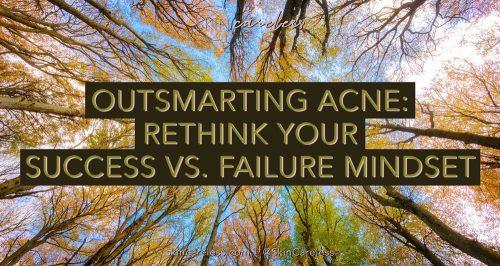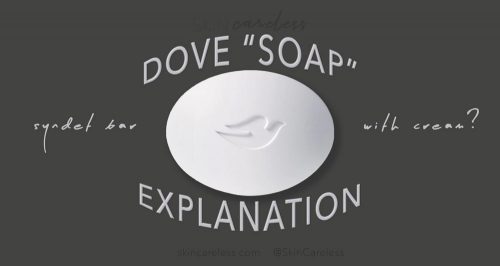You’ve almost certainly come across a face map before – you can find examples all over the internet. It’s usually a graphic of a woman’s face overlaid with shapes defining certain ‘zones’. Each zone is then supposedly linked to an organ of the body or certain bad habit or condition. For example, between the eyes might be related to ‘overconsumption of alcohol’, or the cheeks might be linked to issues of the heart. Think of a foot reflexology chart, if you’ve ever seen one of those, but for your face.

But what is this guide telling us? What does a face map have to do with your skin, how are you meant use it, and better yet, should you?
What face mapping claims to be
You would be forgiven for thinking that face mapping was a totally legitimate visual science. It comes across as a surefire, scientific way of ‘reading’ your acne to reflect upon your body’s health, and thus come up with ways to cure it outside of topical skin treatments.
Basically, you’re supposed to examine your own face in comparison to the face map of your choice, and wherever you’re getting pimples is meant to be an indicator of problems in that area of your body or lifestyle. With that information you’re usually encouraged to change up your diet or lifestyle to heal those problems.

The case for face mapping
Let’s start by taking a look at what we can learn from face maps and where our acne is.
There are some face maps that are more literal. These tend to reference certain hygiene habits or proven body changes that can influence acne in certain areas. The logic there is sound, and encourage good critical thinking towards why you might be breaking out.
For example, you might never disinfect your phone, or wash your pillow (ew). You are certainly more likely to get temporary, poor-hygiene caused acne on your cheeks than anywhere else. (On a side note, does anyone actually hold up a phone to their face anymore??). You might also get neck “acne” because you’re actually not rinsing your conditioner properly, leading to irritation. Those literal, legitimate interpretations of bad skin habits are alright.

What’s also proven is that hormonal acne – generally caused by the naturally fluctuating ratio of oestrogen and progesterone in the skin during a woman’s menstrual cycle, or a preexisting hormonal imbalance – can generate acne specifically in the jawline and chin area. They do this by interacting with one another and other factors like insulin levels in a number of ways to increase androgens, sebum production and testosterone. This acne appears mostly on the jawline and chin because the hair follicles there are extra susceptible to androgens, specifically testosterone, thus getting bigger, oilier, more inflamed and and more clog-prone. We know this because it’s where males – and some females experiencing hormonal imbalance – grow facial hair, a process that is also a sign of sensitivity to these hormones. It’s complex enough that for many people hormonal acne is an all-round problem, and not only related to impending periods, so location and appearance is a surprisingly good way of noticing this hormonal pattern.
Why is face mapping so popular?
So, with the current trend of interest in skin care science on the rise (yay), what is it about this particular practice that’s appealing?
The origins of face mapping are in ancient Chinese and ayurvedic internal medicine. At this time before MRIs and antibiotics, doctors looked for physical signs of more subtle imbalances and diseases. As we now know, a lot of what we used to think was wrong.
Immediately, that lineage gives face mapping an earthy, wise feel that some people are into. A lot of people rely on ancient knowledge for treating their chronic conditions and swear by it. There’s even truth to a lot of the recommended treatments. Often (but not always) holistic health can be less stressful, invasive, dramatic and even less dangerous.
Face mapping is especially relevant for the recent rise in the ‘non-toxic’ and ‘clean beauty’ movement. The proponents of this approach to health claim an overreliance on synthetic chemicals in our daily lives. To them, face mapping a way to interpret your body’s signals beyond what the Average Joe sees, and give your body what it needs, which of course could never be studied, proven, exactly-formulated topical products (hopefully I’m clearly being heavy on the sarcasm).
It’s another way to circumvent traditional products to feel more in control of your skin, whether that’s true or not, similar to the supplements that claim anti-ageing abilities.
Face mapping utilises the age-old trick of appealing to the desperate. It provides tangible ‘solutions’ for people who have suffered from long-term acne. Imagine, you’ve been plagued by forehead acne for years, and now you’ve been told that that means all you needed to do is limit sour foods and thus fix your leaky gut, thereby somehow magically clearing your skin? What have you got to lose? People love to find and share this kind of information, skyrocketing even the most low-effort face map to internet virality.
Finally, that all ties into the power of the visual search engine Pinterest. Face mapping was made for a platform like this – sharing images with short captions, with no real care for provenance or sources. The more visually appealing, the better. And the people on Pinterest love graphics and illustrations that simplify life down to charts and colours.
Why face mapping isn’t actually accurate
Aside from that positive correlation between your lower face and hormone-based acne, the overwhelming data points to a sad truth: face mapping isn’t real. Well, it’s really happening and being shared, but it doesn’t mean its a real source of information.
Face mapping seems so surprising and shockingly simple because it’s just made up. It’s easy to come up with a face map and post it on Pinterest without ever giving reasons why. Seriously, just take a look at the top results on Pinterest or Google for face maps. The inconsistency speaks volumes – each one says something totally different. Are your kidneys connected to your ears, or your eyes? And when you’re concerned about your heart, should you be checking out your nose, or rather your lips? And the maps with similarities are likely copying off one another, and never reference their sources. So even if you were to follow a face map, how can you be sure that’s the “correct” version? You can’t.
Hearsay and anecdotes are not reliable sources to use when deciding whether to make health changes. There have yet to be any studies that show specific areas of the face respond to specific causes of acne in the general population (aside form hormones, as mentioned above). Better yet, there are no logical reasons why we could assume that health fortune telling acne might be location-specific.
There seems to be some sort of acceptance that toxic build up in organs (not a real thing) has no choice but to leach out through the skin in the form of acne. We know from our own critical thinking that this isn’t how acne works, nor is there any special highway for toxins to travel from the appendix to the left eyebrow bone, specifically.
Following these charts will have you spend your time and energy on things that aren’t proven to help acne, rather than the options that are. Instead, you should be focusing on salicylic acid, benzoyl peroxide, and other proven treatments.
The location of your acne is totally unique to you, and often independent of most ‘internal’ factors these maps claim. Implicating diseases and imbalances that are not proven causes of acne for everyone is non-scientific.
Face maps are open to interpretation and therefore undisprovable, similar to the way a medium purports to connect with the dead. You can’t be wrong if your conclusions are numerous and non-specific. Many people with acne will also find themselves suffering from a slight problem in one area of their health or another, and so that means some face maps out there would be accurate! Hold on a minute: that comes at the cost of being highly incorrect 99% of the time for the sake of being correct 1%, and people tend to ignore the misses and remember the correct guesses.
It’s known that people draw illusory correlations between two unrelated events, not out of malice but rather it’s just our brains searching for patterns in random chance. Say you get lots of pimples on your chin, just because that’s where your skin is oiliest, and you also have high blood pressure. That doesn’t mean you can link these things together and make a face map that says “High blood pressure = Chin acne” to pass around to others. Your skin and biology and health is unique to you.
Finally, most of these sources push you to treat your issue “naturally”. If I did have a congested liver, and somehow spotted it through thorough investigation of the skin on the underside of my nose, I would need to see a doctor, not go on a cleanse!
Use tools like face maps wisely. Do your own research into why the suggested causes of acne are possibly true.
There is simply no evidence yet to show that any of the claimed long-standing organ stress can manifest as certain types of acne, nor that pimples in any certain areas mean specific organs need detoxing. You’d be better off spending your time looking at peer-reviewed studies, proven remedies or visiting a dermatologist.






[…] Guides that range from ridiculous to the suspiciously scientific: like face maps, which upon closer inspection are no more than a virality-grab. […]